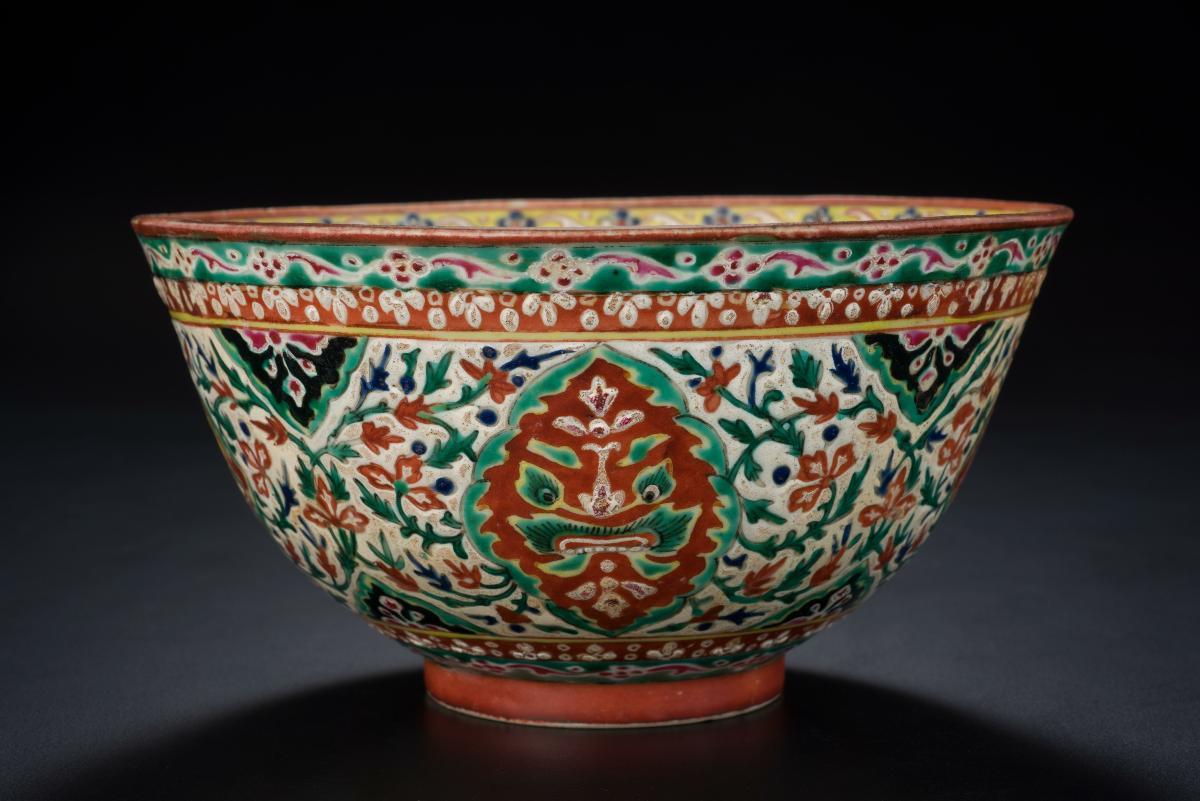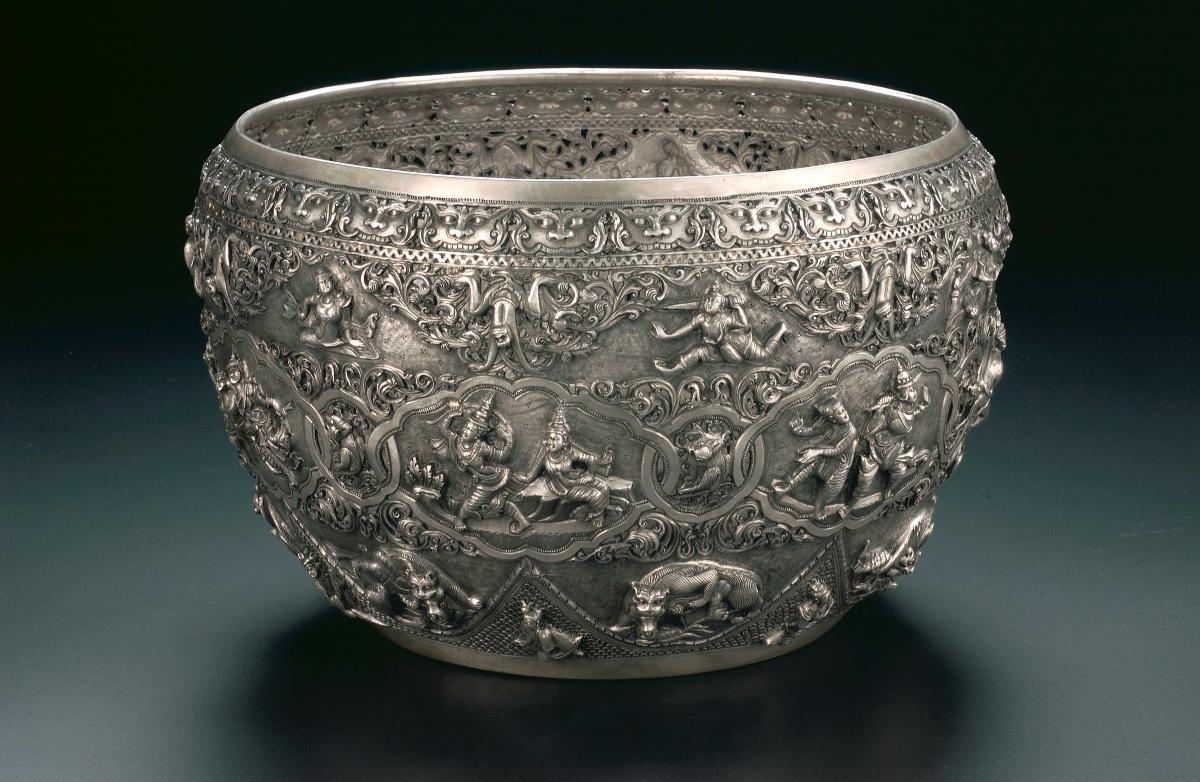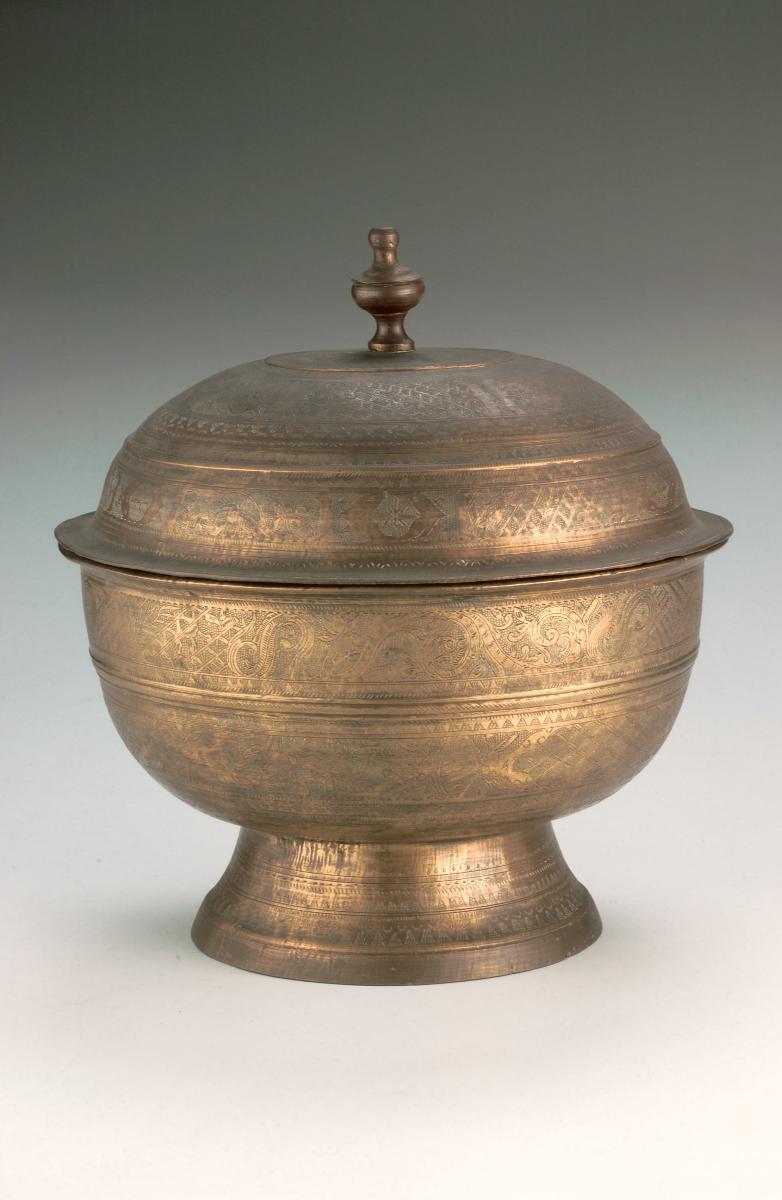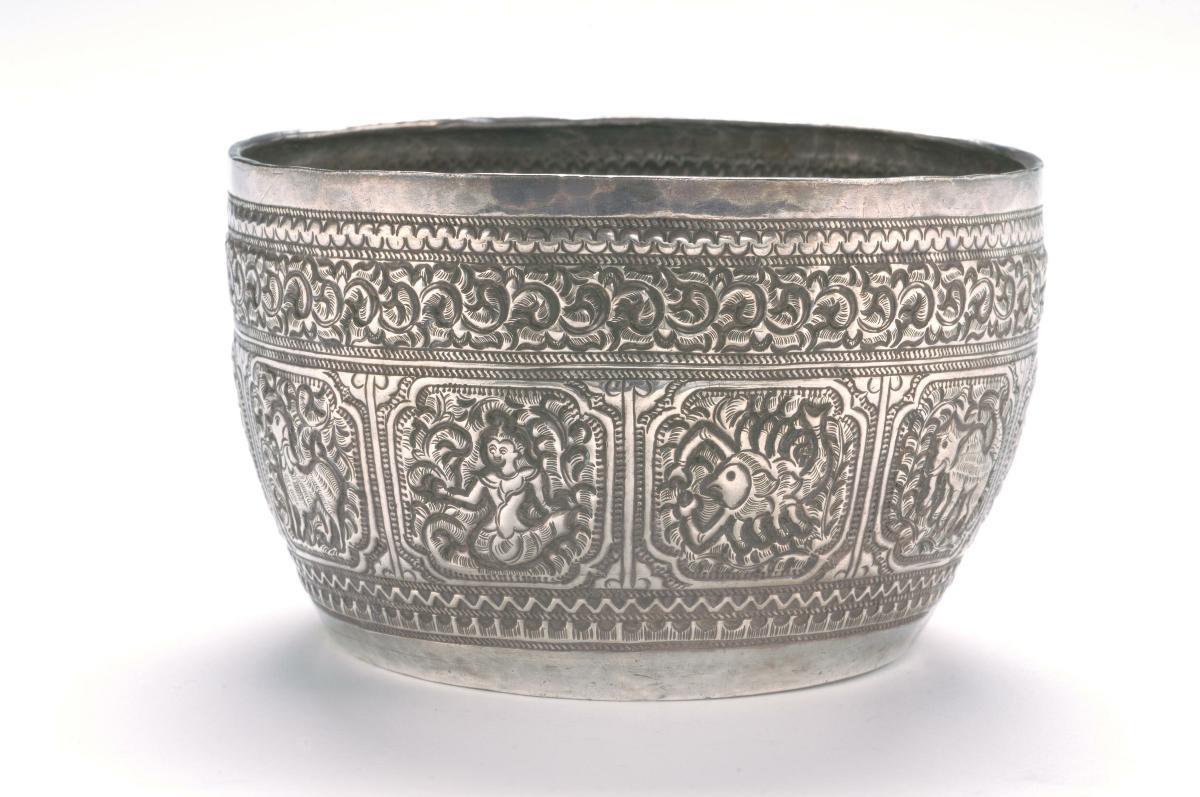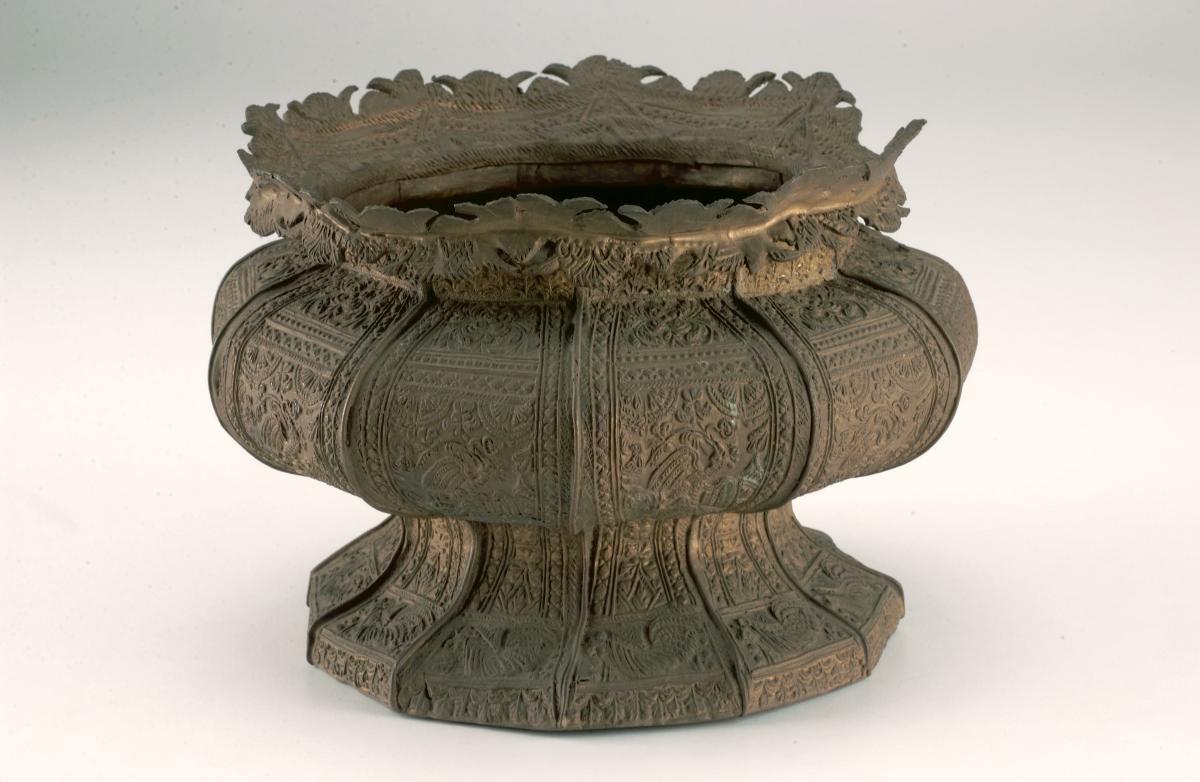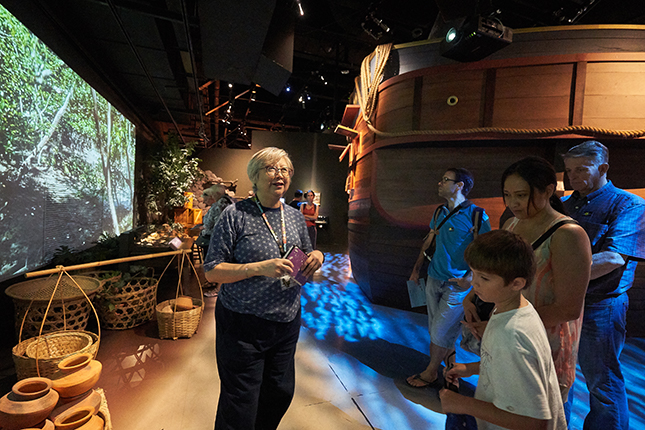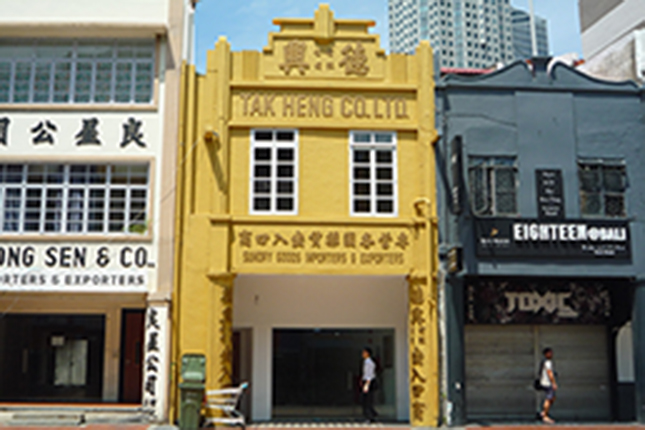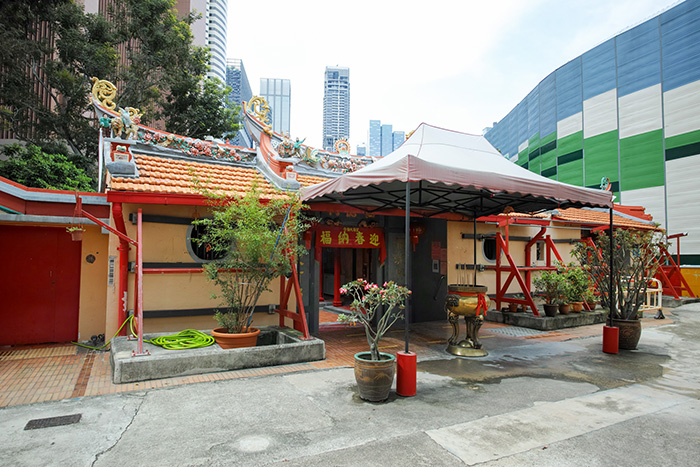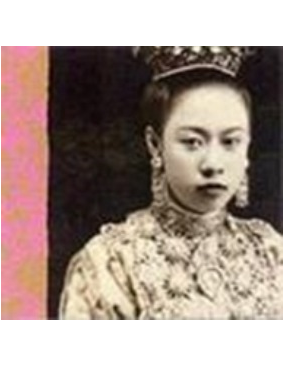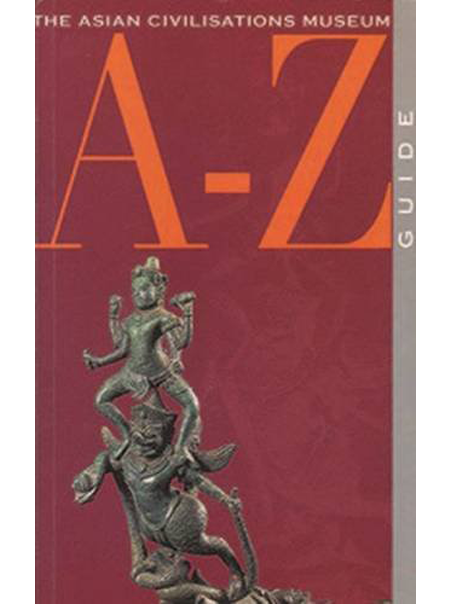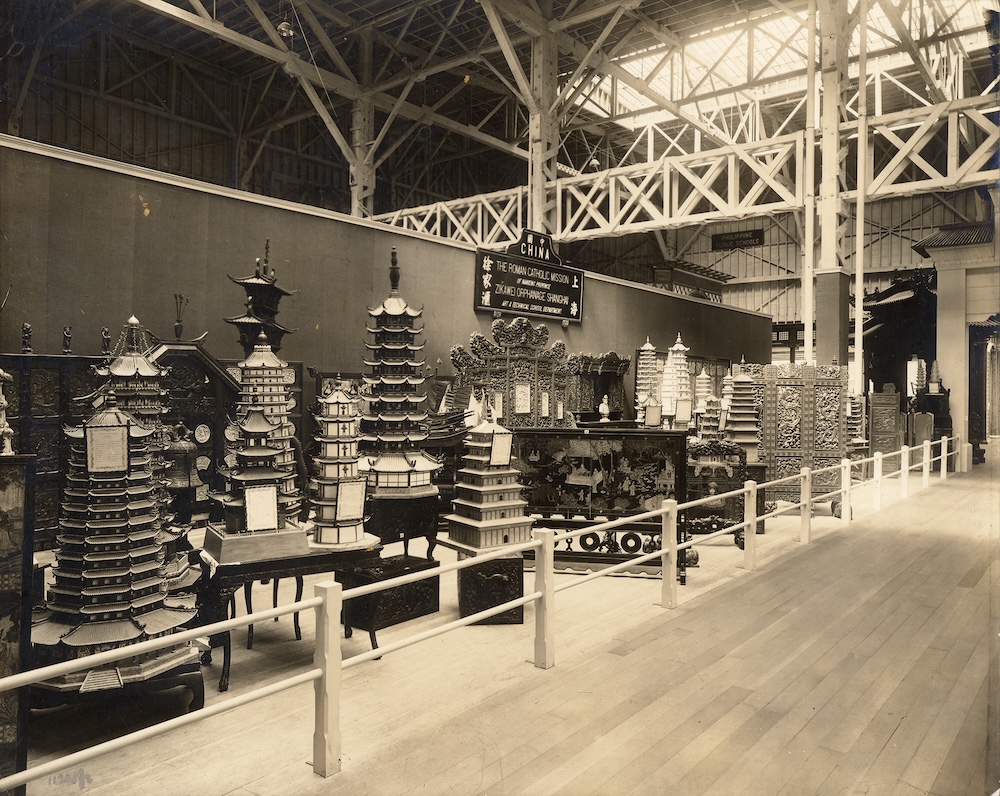These two bowls illustrate the cross-cultural influence of Chinese export ware. While the Chinese became experts at crafting objects catered to the taste and demands of foreign markets, they nonetheless transferred cultural peculiarities in the stylistic features of objects they produced. In this case, the shape of the bowl is a commonly associated Chinese shape that subsequently became one of the most common shapes to be exported to many countries in Southeast Asia. Two motifs feature on both bowls. First, the rajasingh, a name derived from Sanskrit words raja (“king”) and singh (“lion”) and thus this motif on Bencharong was reserved for exclusive use by the King. The motif resembles a Chinese lion with its fearsome look, standing in profile with a flame-like tail, aping mouth with pointed teeth and spikey mane. The singhakala, a protector in both Buddhist and Hindu mythology, is an abstractly drawn lion face. As the name suggests, it is a composite of a lion and a kala, a creature with a fierce, mask-like face, horns, bulging eyes, lion’s nose and a gaping mouth with teeth. The face is set into an oval medallion and is depicted as surrounded by flames, suggesting the power to scare away evil spirits.




